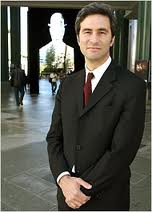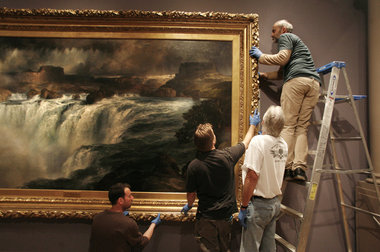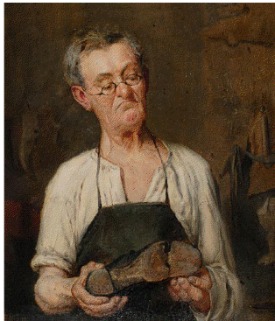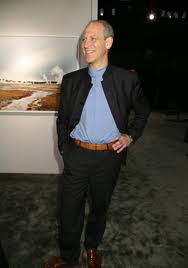The Los Angeles Times carried an article in Saturday’s paper that begs comment.
 It was about Michael Govan, whose contract as director of the Los Angeles County Museum of Art had quietly been re-upped for six more years in July. The news was disclosed when LACMA posted its audited financial statements for FY 2009-10 online, and the Times rightly dissected them.It found that news, plus several gossipy, telling tidbits, like the $1-million bonus Govan received for completing his initial contract and the dispute he is having with collector Eli Broad over a $5.5 million cost overrun on the Broad building at LACMA.
It was about Michael Govan, whose contract as director of the Los Angeles County Museum of Art had quietly been re-upped for six more years in July. The news was disclosed when LACMA posted its audited financial statements for FY 2009-10 online, and the Times rightly dissected them.It found that news, plus several gossipy, telling tidbits, like the $1-million bonus Govan received for completing his initial contract and the dispute he is having with collector Eli Broad over a $5.5 million cost overrun on the Broad building at LACMA.
But here’s where I have to raise questions. Citing Govan’s accomplishments, the article said:
Govan, who led New York’s Dia Art Foundation before coming to LACMA, said last year that he hoped to be at LACMA for the long haul, as long as the trustees supported his ambitions for the museum. On his watch, LACMA has planned and built one facility, the Resnick Exhibition Pavilion; opened another that was in progress when he arrived, the Broad Contemporary Art Museum; and purchased property along Wilshire Boulevard that could permit further growth.
I looked for the next paragraph of accomplishments, but it never came. Where was mention of great exhibitions held at LACMA? How about great acquisitions? Completed conservation projects? The Reading Room project, which makes its art catalogues available online? Anything new on the educational program front?
I well know the limitations of space at publications, and I know the pressure to write what editors and reporters think people want to read. But this seems to me to be a case where the media is complicit in fostering the wrong measures of accomplishment for museums. Even if the building projects were the only thing mentioned in the report, even if the bonus payment was contingent only on them, it wouldn’t have taken long to come up with a few other examples of success on Govan’s watch. LACMA’s Fall edition of its “Insider” bulletin has many of the answers — an Eakins exhibition, a Matisse acquisition — and I think the public does care about more than expansions, even if trustees don’t.
Here’s one bright spot: at least the article didn’t mention attendance on Govan’s watch. Too much attention is paid to that already.
Photo Credit: Courtesy of The New York Times

 I like them because a focus on one painting seems special to me — just what single painting merits a show of its own? — and it almost forces visitors to look, really look. Probable cost savings, versus large exhibitions, are another plus in these difficult times. I think these shows, of the right high-quality works, should be part of virtually every museum’s mix.
I like them because a focus on one painting seems special to me — just what single painting merits a show of its own? — and it almost forces visitors to look, really look. Probable cost savings, versus large exhibitions, are another plus in these difficult times. I think these shows, of the right high-quality works, should be part of virtually every museum’s mix.  I suppose that is what drew me to the idea behind Taxing Visions: Financial Episodes in Late Nineteenth-Century American Art, which is on view at the
I suppose that is what drew me to the idea behind Taxing Visions: Financial Episodes in Late Nineteenth-Century American Art, which is on view at the  First on museums: “For any museum to thrive,” he said, “it needs to grow and change and constantly rethink itself,” whether it’s a history museum or a museum of contemporary art. They should not be afraid to become a different institution, he added.
First on museums: “For any museum to thrive,” he said, “it needs to grow and change and constantly rethink itself,” whether it’s a history museum or a museum of contemporary art. They should not be afraid to become a different institution, he added. Museums don’t have that problem, exactly. Visitors can come and stay for 20 minutes or all day. But there’s a catch: that equation changed as museum admissions have ratcheted up to $20 (MoMA, MFA-Boston), $18 (the Whitney, the Guggenheim, the Art Institute of Chicago), $16 (Philadelphia Museum of Art,
Museums don’t have that problem, exactly. Visitors can come and stay for 20 minutes or all day. But there’s a catch: that equation changed as museum admissions have ratcheted up to $20 (MoMA, MFA-Boston), $18 (the Whitney, the Guggenheim, the Art Institute of Chicago), $16 (Philadelphia Museum of Art,